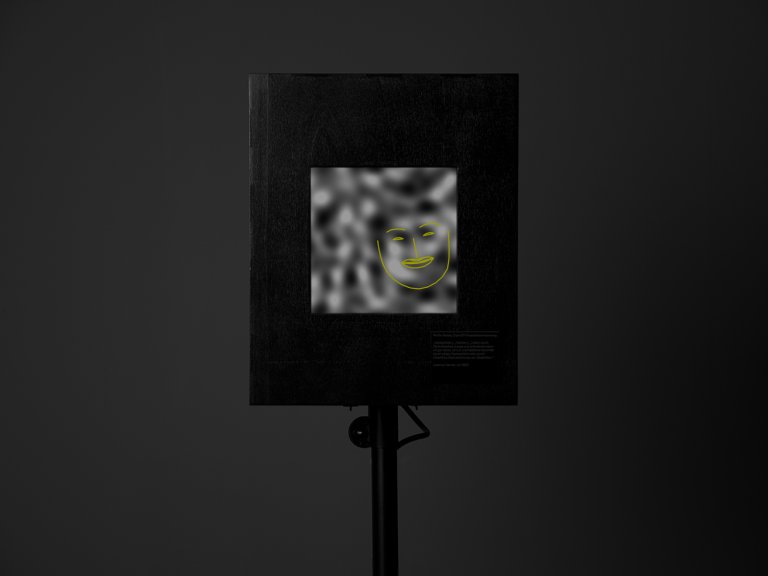Edges of Understanding
2019
Installation/BA-Thesis
Wood, Phosphorecent Ink, Screens, UV-Lamp, Raspberry PIs

A vapor sometime like a bear or lion,
A towered citadel, a pendant rock,
A forked mountain, or blue promontory
With trees upon’t that nod unto the world
And mock our eyes with air.
Thou hast seen these signs.
They are black vesper’s pageants."
William Shakespeare: Antonius and Cleopatra. 1606/07
Around 1856, the German doctor Justinus Kerner created a series of ink blots called "Klecksographien". Kerner poured ink onto paper, folded it and then enhanced the shapes that he recognised in the pictures. He did not see the works as pure art but rather found his "nervous spirit", a part of his psyche, in there. On the basis of the shapes that Kerner recognized in the ink blots, he drew conclusions about an otherwise invisible part of his psyche.
A similar process can be found in Google's neural network DeepDream. The net searches for forms in randomly generated images and then traces them. Using these images, conclusions can be drawn about the functioning of the neural network.
The installation brings shape recognition "at the edge of understanding". All three boxes show images that leave room for interpretation and thus trigger apophenia, both for humans and for computers.
Kerner's "Edge of Understanding" was about exploring the human psyche; today it's about understanding the processes in a neural network, and the methods seem remarkably similar. The work can be seen as a visually encoded critical commentary on the perception of artificial intelligence.
developed in the new media class at UdK berlin | BA-Supervisors:
Prof. Joachim Sauter
Prof. Dr. phil. Alberto de Campo
Alexander Peterhaensel

Box 1: Perlin Noise, OpenCV Face Detection
„Hadesbilder [...] came [...] only through
inkblots and then often required
none at all, often only insignificant reworking by
a few strokes of the pen or by
artificial tracing of faces.“
Justinus Kerner, around 1856


Box 2: 1000 Particles On Perlin Noise Field
„These images from Hades,
[...]
Have formed themselves
Without my help, I am dismayed
Only - from ink stains“
Justinus Kerner, around 1856



Box 3: Generated Dreamimages, DeepDreamAI
„Humans have not made this picture,
As it happened to the others, it came by its own power
Unexpected from the Inks Night“
Justinus Kerner, around 1856





